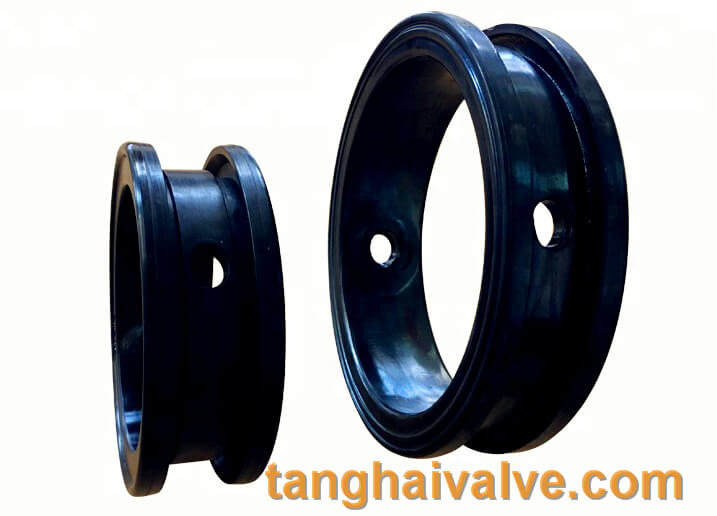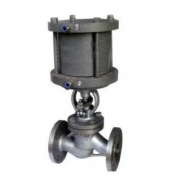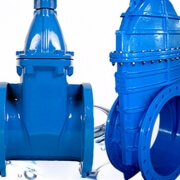The main classification and use conditions of valve sealing materials
The valve seal is the most important part of the entire valve. Its main purpose is to prevent leakage. The valve sealing

soft sealing marine valve, rubber sealing, valve seat parts
seat is also called a sealing ring. It is an organization that directly contacts the medium in the pipeline and prevents the medium from flowing. When the valve is in use, there are a variety of different media in the pipeline, such as liquid, gas, oil, corrosive media, etc., and different valve seals are used in different places and can adapt to various medium.
Then, valve seal materials can be divided into two major categories, namely, metallic materials and non-metallic materials. Non-metallic seals are generally used for pipelines at room temperature and pressure, while metal seals are widely used and can be used for high temperature and high pressure!
The following briefly introduces the use conditions of various sealing materials and the commonly used valve types.
1. Synthetic rubber
Synthetic rubber is better than natural rubber in oil resistance, temperature resistance and corrosion resistance. Generally, the use temperature of synthetic rubber t≤150℃, natural rubber t≤60℃, and rubber is used for the sealing of stop valves, gate valves, diaphragm valves, butterfly valves, check valves, pinch valves and other valves with a nominal pressure of PN≤1MPa. Commonly used types of synthetic rubber: NBR, EPDM, VITON.
2. Nylon
Nylon has the characteristics of low friction coefficient and good corrosion resistance. Nylon is mostly used for ball valves and globe valves with temperature t≤90℃ and nominal pressure PN≤32MPa.
3. Polytetrafluoroethylene Polytetrafluoroethylene is mostly used for globe valves, gate valves, and ball valves with a temperature t≤232℃ and a nominal pressure of PN≤6.4MPa. Short name: PTFE
4. Cast iron
Cast iron is used for gate valves, stop valves, cock valves, etc. for temperature t≤100℃, nominal pressure PN≤1.6MPa, gas and oil. main types: GI, DI
5. Babbitt alloy
Babbitt alloy is used for ammonia stop valves with temperature t-70~150℃ and nominal pressure PN≤2.5MPa.
6. Copper alloy
Commonly used copper alloy materials include 6-6-3 tin bronze and 58-2-2 manganese brass. Copper alloy has good wear resistance, suitable for water and steam with temperature t≤200℃ and nominal pressure PN≤1.6MPa. It is often used in gate valves, globe valves, check valves, plug valves, etc.
7. Chromium stainless steel
Commonly used grades of chromium stainless steel are 2Cr13 and 3Cr13 after quenching and tempering treatment, which has good corrosion resistance. It is commonly used on valves of water, steam, petroleum and other media with temperature t≤450℃ and nominal pressure PN≤32MPa.
8. Chromium nickel titanium stainless steel
The commonly used grade of chromium nickel titanium stainless steel is 1Cr18Ni9ti, which has good corrosion resistance, erosion resistance and heat resistance. It is suitable for steam, nitric acid and other media with temperature t≤600℃ and nominal pressure PN≤6.4MPa, used in stop valves, ball valves, etc.
9. Nitrided steel
The commonly used grade of nitriding steel is 38CrMoAlA, which has good corrosion resistance and scratch resistance after carburizing treatment. Commonly used for power station gate valves with temperature t≤540℃ and nominal pressure PN≤10MPa.
10. Boronizing
Boronizing is directly processed from the valve body or valve clack body material to form the sealing surface, and then boronizing surface treatment, the sealing surface has good wear resistance. Used in power station blowdown valves. To
When the valve is in use, the matters that should be paid attention to are:
1. The sealing performance of the valve should be tested to ensure its performance.
2. Check whether the sealing surface of the valve is worn, and repair or replace it according to the situation.

 tanghaivalve.com
tanghaivalve.com  tanghaivalve.com
tanghaivalve.com 

 © Copyright 2020 Tianjin Tanghaidongyang Valve Co., Ltd. All Rights Reserved.
© Copyright 2020 Tianjin Tanghaidongyang Valve Co., Ltd. All Rights Reserved.